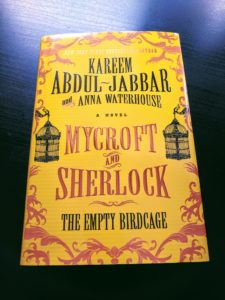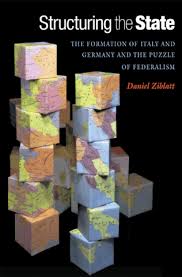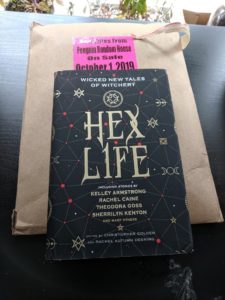One of the unusual things that Naomi Novik does in Spinning Silver — so unusual, in fact, that I can’t think of another fantasy book that does it — is to state that some of her main characters are Jews. The first chapter lays out the hints: the characters are moneylenders in a small town whose other contextual clues point to it being in an analog of Eastern Europe; they are held separate from most of the other townspeople, who cheat them when they can; the main characters celebrate a different mid-winter holiday than their neighbors. They are not named as Jewish until the third chapter, when they go visit more prosperous extended family in the nearest city.
Another unusual thing that Novik does is to show unsentimentally what it meant to be poor in the kind of medieval setting common to many fantasy novels. This is not the Shire of mushrooms, elevenses and gentleman farmers. This is a family running out of food at the end of winter because the mother has died, the father is an alcoholic and sold the kid goat for drink, so not only was there no meat from it, the mama goat stopped giving milk.
Miryem, the first first-person narrator of Spinning Silver, is the daughter of the only Jewish family in a small town so unimportant it does not even have a proper name. Her father is the local moneylender, but he is too kind, or perhaps too softhearted, to be very good at it. The villagers bully him, and pay back as little as possible. But the year that she turns sixteen, the winter is colder than ever before, her mother is ill, there is no money for medicine, and they are scraping together wood for candles, having burned the last of the oil. Miryem goes through her father’s books, finds out what everyone owes, and sets out before dawn to go collecting.
They tried to put me off, of course, some of them laughed at me. … I stood on their doorsteps, and I brought out my list, and I told them how much they had borrowed, and what they had paid, and how much interest they owed besides.
They spluttered and argued and some of them shouted. No one had ever shouted at me in my life: my mother with her quiet voice, my gentle father. But I found something bitter inside myself, something of that winter blown into my heart: the sound of my mother coughing, and the memory of the story the way they’d told it in the village square many times, about a girl who made herself a queen with someone else’s gold, and never paid her debts. I stayed in their doorways, and I didn’t move. My numbers were true, and they and I knew it, and when they’d shouted themselves out, I said, ‘Do you have the money?’ (pp. 9–10)










